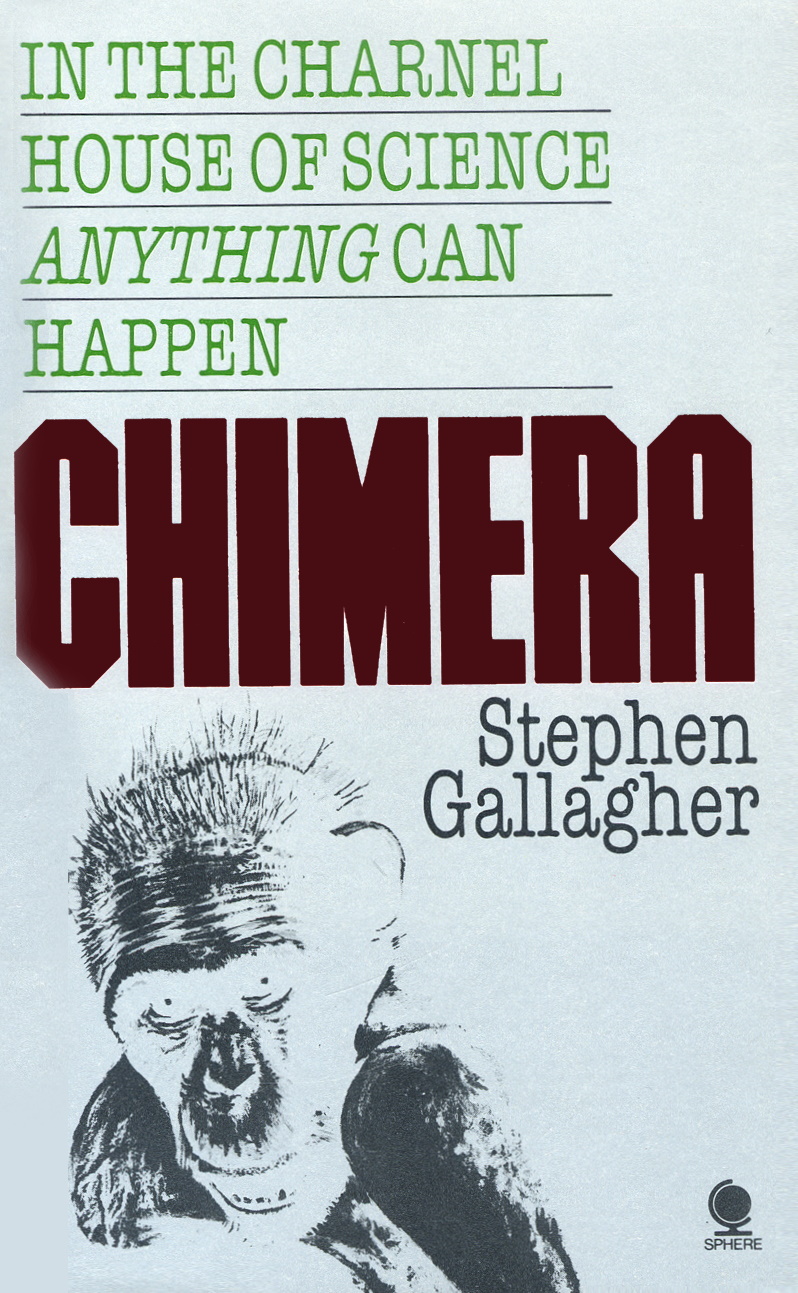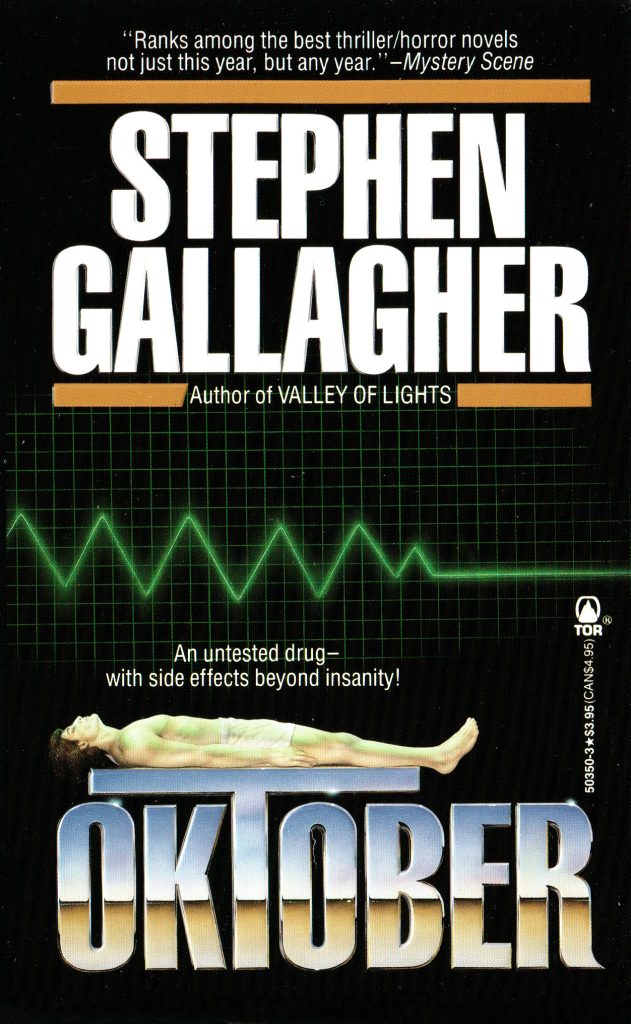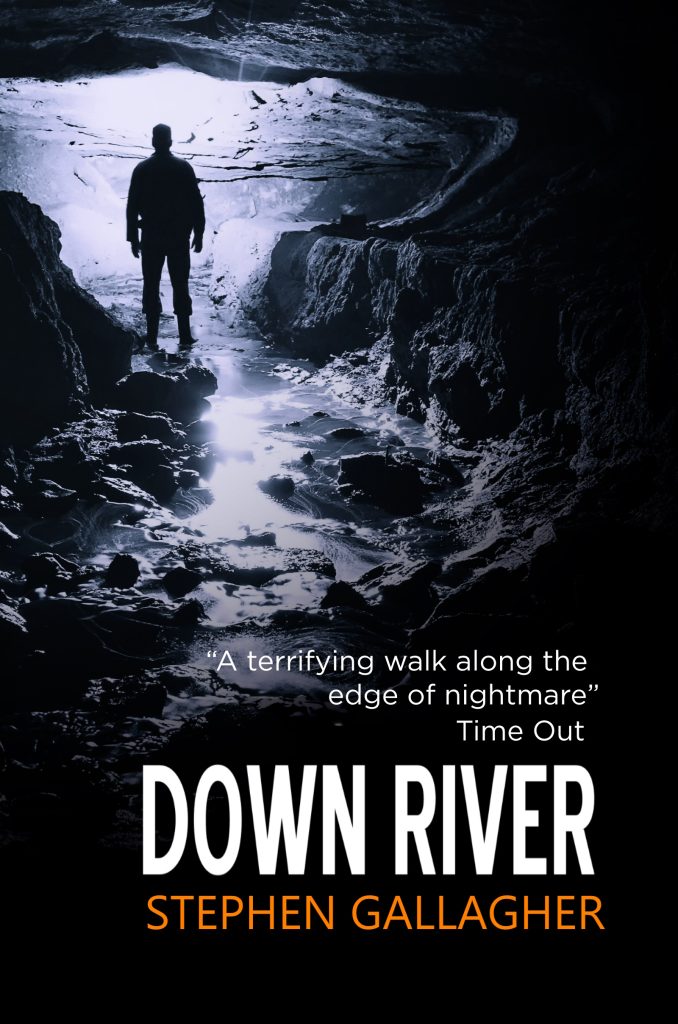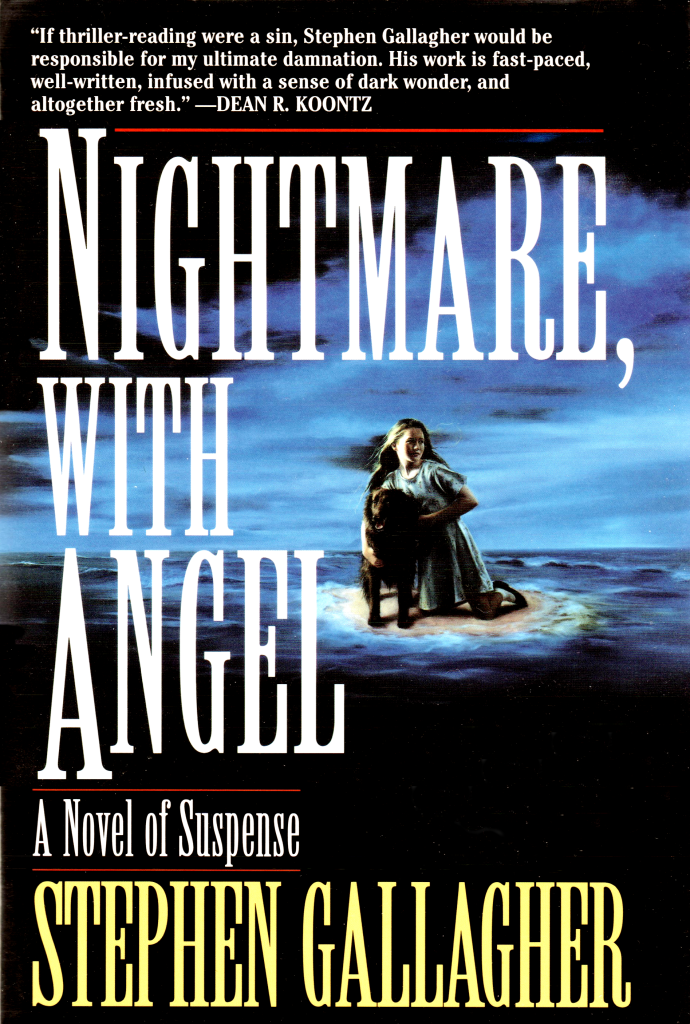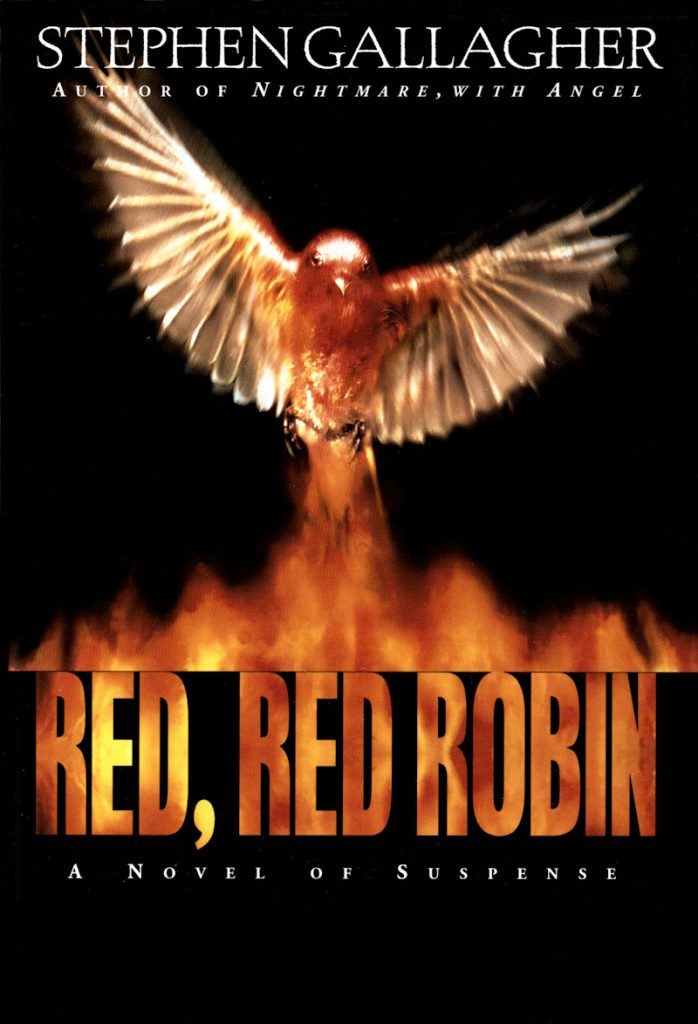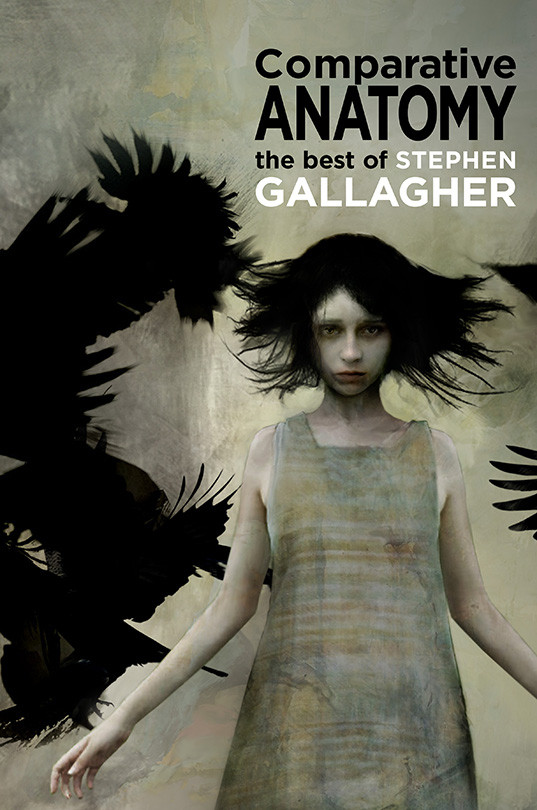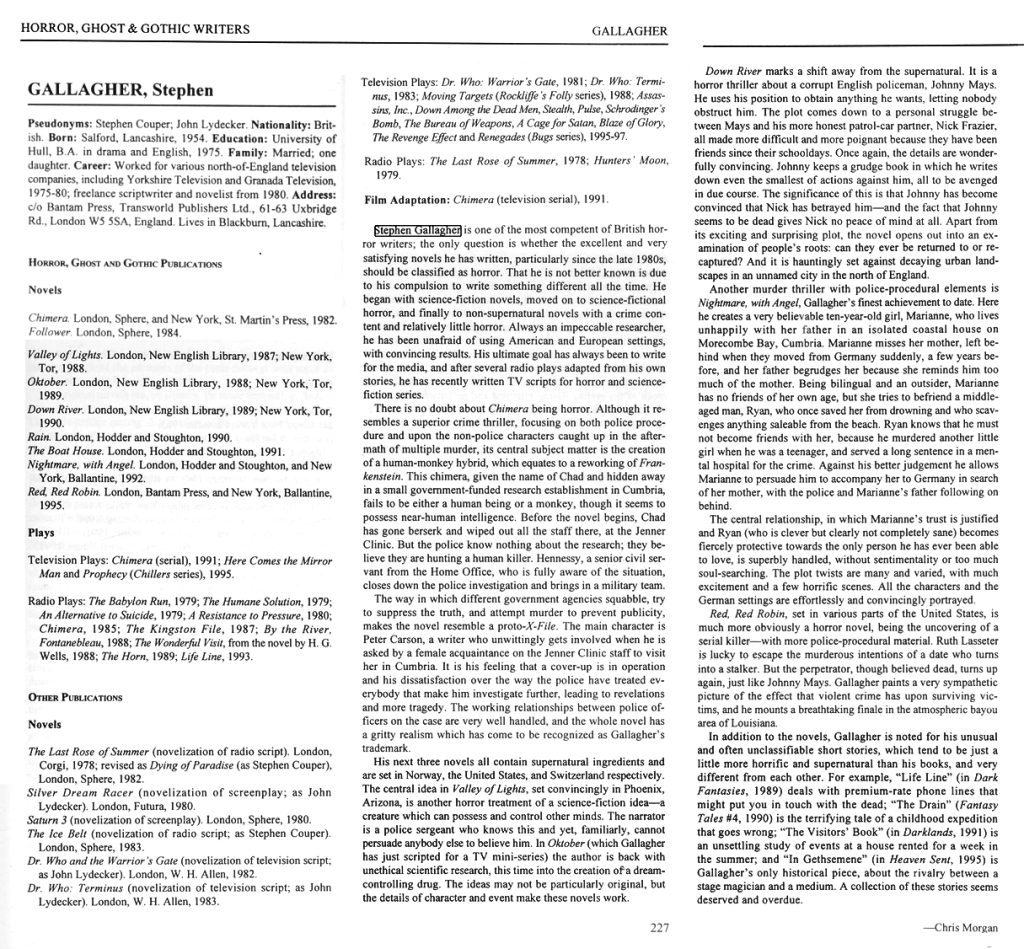By Chris Morgan, written for publication in the St James Guide to Horror, Ghost and Gothic Writers, 1998
Stephen Gallagher is one of the most competent of British horror writers; the only question is whether the excellent and very satisfying novels he has written, particularly since the late 1980s, should be classified as horror. That he is not better known is due to his compulsion to write something different all the time. He began with science-fiction novels, moved on to science-fictional horror, and finally to non-supernatural novels with a crime content and relatively little horror. Always an impeccable researcher, he has been unafraid of using American and European settings, with convincing results. His ultimate goal has always been to write for the media, and after several radio plays adapted from his own stories, he has recently written TV scripts for horror and science-fiction series.
There is no doubt about Chimera being horror. Although it resembles a superior crime thriller, focusing on both police procedure and upon the non-police characters caught up in the aftermath of multiple murder, its central subject matter is the creation of a human-monkey hybrid, which equates to a reworking of Frankenstein. This chimera, given the name of Chad and hidden away in a small government-funded research establishment in Cumbria, fails to be either a human being or a monkey, though it seems to possess near-human intelligence. Before the novel begins, Chad has gone berserk and wiped out all the staff there, at the Jenner Clinic. But the police know nothing about the research; they believe they are hunting a human killer. Hennessy, a senior civil servant from the Home Office, who is fully aware of the situation, closes down the police investigation and brings in a military team.
The way in which different government agencies squabble, try to suppress the truth, and attempt murder to prevent publicity, makes the novel resemble a proto-X-File. The main character is Peter Carson, a writer who unwittingly gets involved when he is asked by a female acquaintance on the Jenner Clinic staff to visit her in Cumbria. It is his feeling that a cover-up is in operation and his dissatisfaction over the way the police have treated everybody that make him investigate further, leading to revelations and more tragedy. The working relationships between police officers on the case are very well handled, and the whole novel has a gritty realism which has come to be recognized as Gallagher’s trademark.
His next three novels all contain supernatural ingredients and are set in Norway, the United States, and Switzerland respectively. The central idea in Valley of Lights, set convincingly in Phoenix, Arizona, is another horror treatment of a science-fiction idea—a creature which can possess and control other minds. The narrator is a police sergeant who knows this and yet, familiarly, cannot persuade anybody else to believe him. In Oktober (which Gallagher has just scripted for a TV mini-series) the author is back with unethical scientific research, this time into the creation of a dream-controlling drug. The ideas may not be particularly original, but the details of character and event make these novels work.
Down River marks a shift away from the supernatural. It is a horror thriller about a corrupt English policeman, Johnny Mays. He uses his position to obtain anything he wants, letting nobody obstruct him. The plot comes down to a personal struggle between Mays and his more honest patrol-car partner, Nick Frazier, all made more difficult and more poignant because they have been friends since their schooldays. Once again, the details are wonderfully convincing. Johnny keeps a grudge book in which he writes down even the smallest of actions against him, all to be avenged in due course. The significance of this is that Johnny has become convinced that Nick has betrayed him—and the fact that Johnny seems to be dead gives Nick no peace ofmind at all. Apart from its exciting and surprising plot, the novel opens out into an examination of people’s roots: can they ever be returned to or recaptured? And it is hauntingly set against decaying urban landscapes in an unnamed city in the north of England.
Another murder thriller with police-procedural elements is Nightmare. with Angel, Gallagher’s finest achievement to date. Here he creates a very believable ten-year-old girl, Marianne, who lives unhappily with her father in an isolated coastal house on Morecombe Bay, Cumbria. Marianne misses her mother, left behind when they moved from Germany suddenly, a few years before, and her father begrudges her because she reminds him too much of the mother. Being bilingual and an outsider, Marianne has no friends of her own age, but she tries to befriend a middle-aged man, Ryan, who once saved her from drowning and who scavenges anything saleable from the beach. Ryan knows that he must not become friends with her, because he murdered another little girl when he was a teenager, and served a long sentence in a mental hospital for the crime. Against his better judgement he allows Marianne to persuade him to accompany her to Germany in search of her mother, with the police and Marianne’s father following on behind.
The central relationship, in which Marianne’s trust is justified and Ryan (who is clever but clearly not completely sane) becomes fiercely protective towards the only person he has ever been able to love, is superbly handled, without sentimentality or too much soul-searching. The plot twists are many and varied, with much excitement and a few horrific scenes. All the characters and the German settings are effortlessly and convincingly portrayed.
Red. Red Robin, set in various parts of the United States, is much more obviously a horror novel, being the uncovering of a serial killer—with more police-procedural material. Ruth Lasseter is lucky to escape the murderous intentions of a date who turns into a stalker. But the perpetrator, though believed dead, turns up again, just like Johnny Mays. Gallagher paints a very sympathetic picture of the effect that violent crime has upon surviving victims, and he mounts a breathtaking finale in the atmospheric bayou area of Louisiana.
In addition to the novels, Gallagher is noted for his unusual and often unclassifiable short stories, which tend to be just a little more horrific and supernatural than his books, and very different from each other. For example, “Life Line” (in Dark Fantasies, 1989) deals with premium-rate phone linesthat might put you in touch with the dead; “The Drain” (Fantasy Tales #4, 1990) is the terrifying tale of a childhood expedition that goes wrong; “The Visitors’ Book” (in Darklands, 1991) is an unsettling study of events at a house rented for a week in the summer; and “In Gethsemene” (in Heaven Sent, 1995) is Gallagher’s only historical piece, about the rivalry between a stage magician and a medium. A collection of these stories seems deserved and overdue.
Chris Morgan
